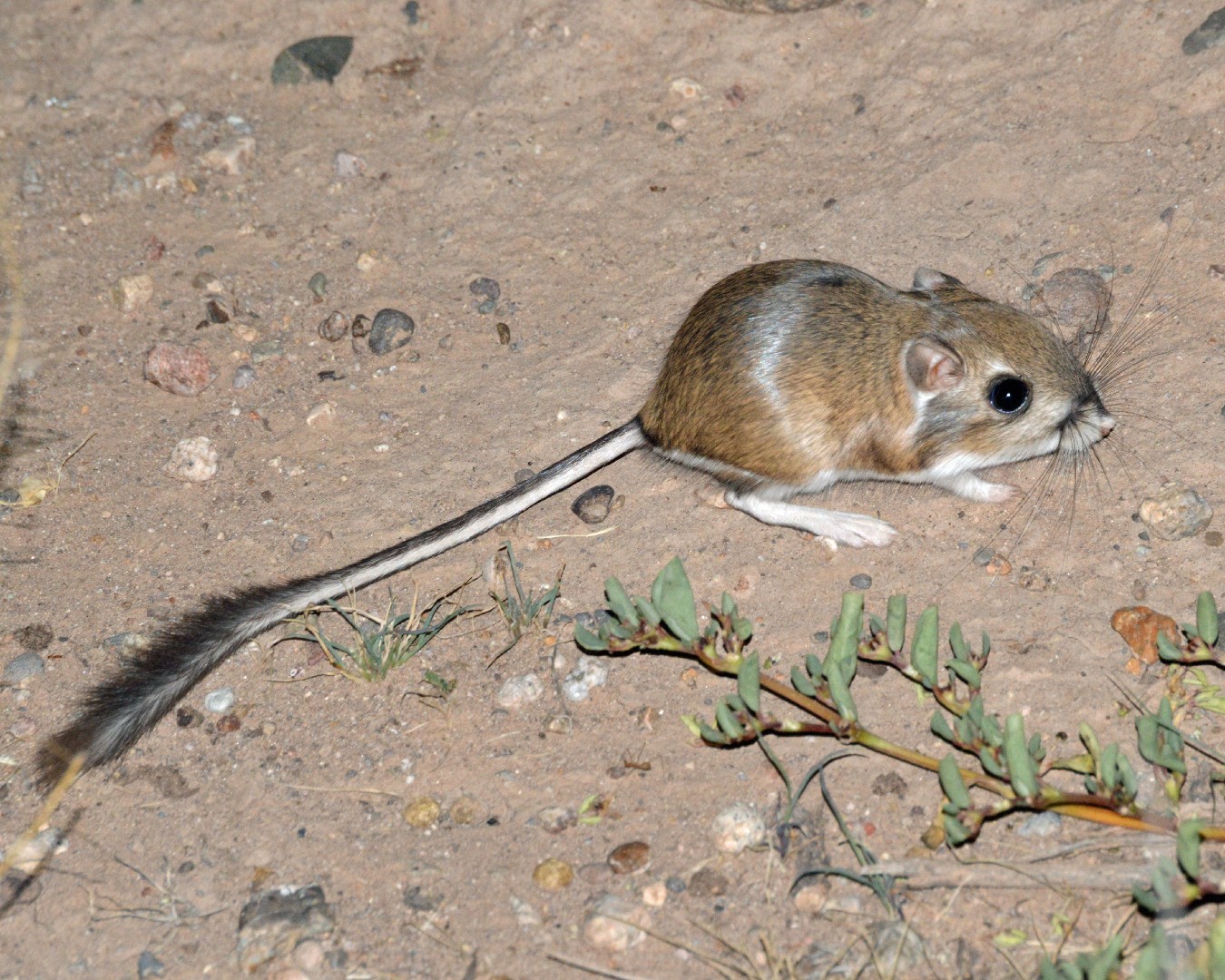Merriam's kangaroo rat
A species of Kangaroo rats, Also known as San bernardino merriam's kangaroo rat Scientific name : Dipodomys merriami Genus : Kangaroo rats
Merriam's kangaroo rat, A species of Kangaroo rats
Also known as:
San bernardino merriam's kangaroo rat
Scientific name: Dipodomys merriami
Genus: Kangaroo rats
Content
Description General Info
 Photo By Bcexp , used under CC-BY-SA-4.0 /Cropped and compressed from original
Photo By Bcexp , used under CC-BY-SA-4.0 /Cropped and compressed from original Description
The San Bernardino kangaroo rat follows the same body plan as Dipodomys merriami and other kangaroo rat species: large hind feet for jumping, long tail for balance while jumping, cheek pouches for foraging, and so on. Its body is about 95 millimeters (3.7 inches) long, with a total length of 230–235 mm (9-9.3 in). Its body color is weakly yellow with a heavy overwash of dusky brown. The tail stripes are medium to dark brown, with dark brown tail hairs and foot pads. Its flanks and cheeks are dusky. D. m. parvus is substantially darker and smaller than the other two D. merriami subspecies that live in Southern California (Dipodomys merriami merriami and Dipodomys merriami collinus). This marked adaptation to its habitat has led Lidicker to say that "it seems likely to have achieved nearly species rank." (Lidicker 1960) 
General Info
Lifespan
2-4 years
Diet
Merriam's kangaroo rat's diet primarily consists of seeds, which it hoards in its burrows. It also consumes small amounts of green vegetation and insects for nutritional balance.
Appearance
The merriam's kangaroo rat has a medium-sized, elongated body covered with silky fur, predominantly sandy-brown, interspersed with black and white markings. It possesses long hind legs designed for jumping, short forelimbs ideal for digging, and a bushy tail extending its length. The species' large, nocturnally-adapted eyes and prominent ears are notable. There are no significant appearance differences due to age, gender, or subspecies.
Behavior
Merriam's kangaroo rat engage in nocturnal, solitary foraging behavior, using their developed hind limbs to hop. They build complex burrow networks for nesting and thermal regulation. Socially, males show territorial aggression, whilst females display mate-guarding behavior. Their adapted cheek pouches allow efficient food gathering in arid environments.
Population
Stable
Scientific Classification
Phylum
Chordates Class
Mammals Order
Gnawing mammals Genus
Kangaroo rats Species
Merriam's kangaroo rat